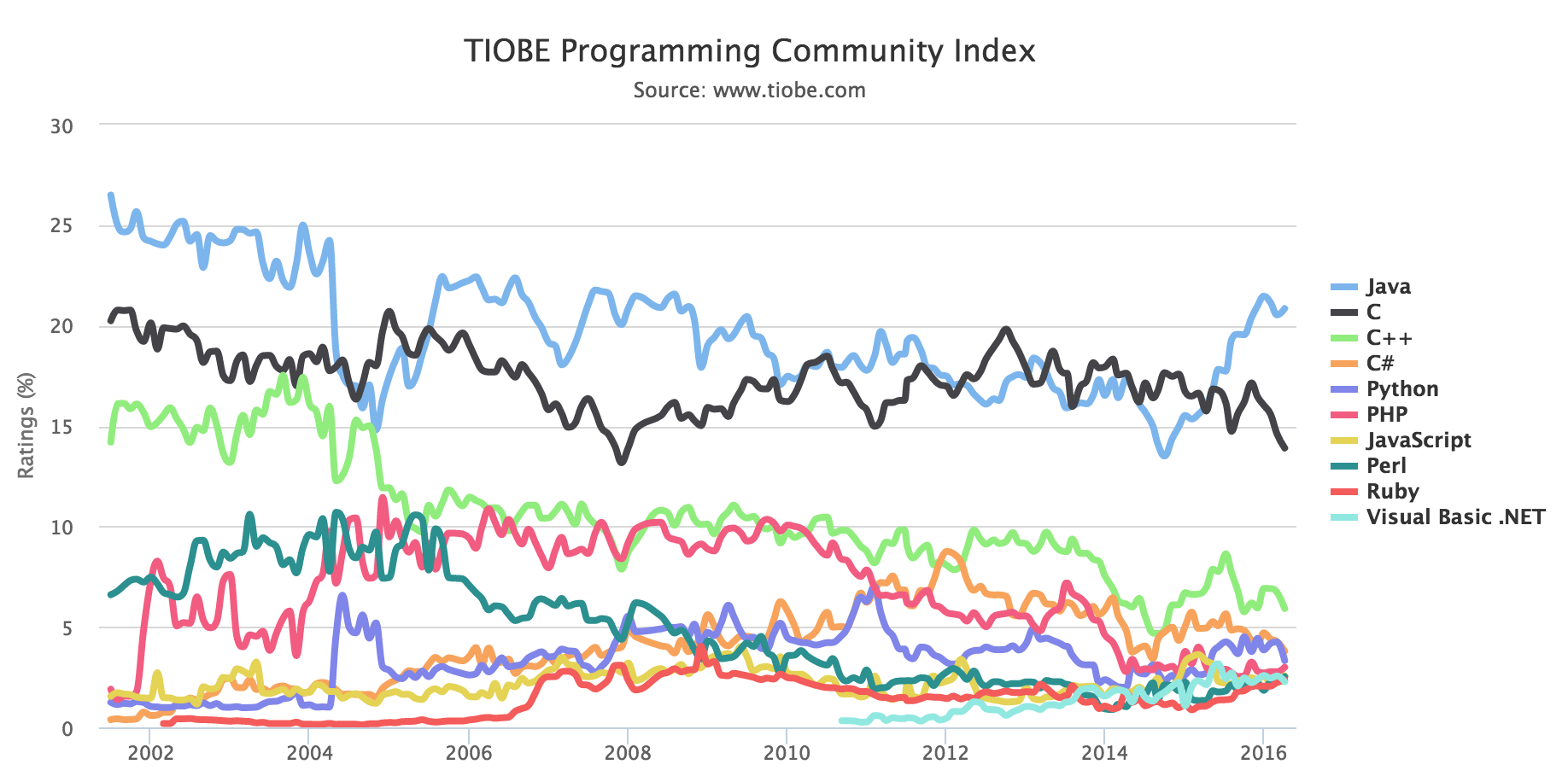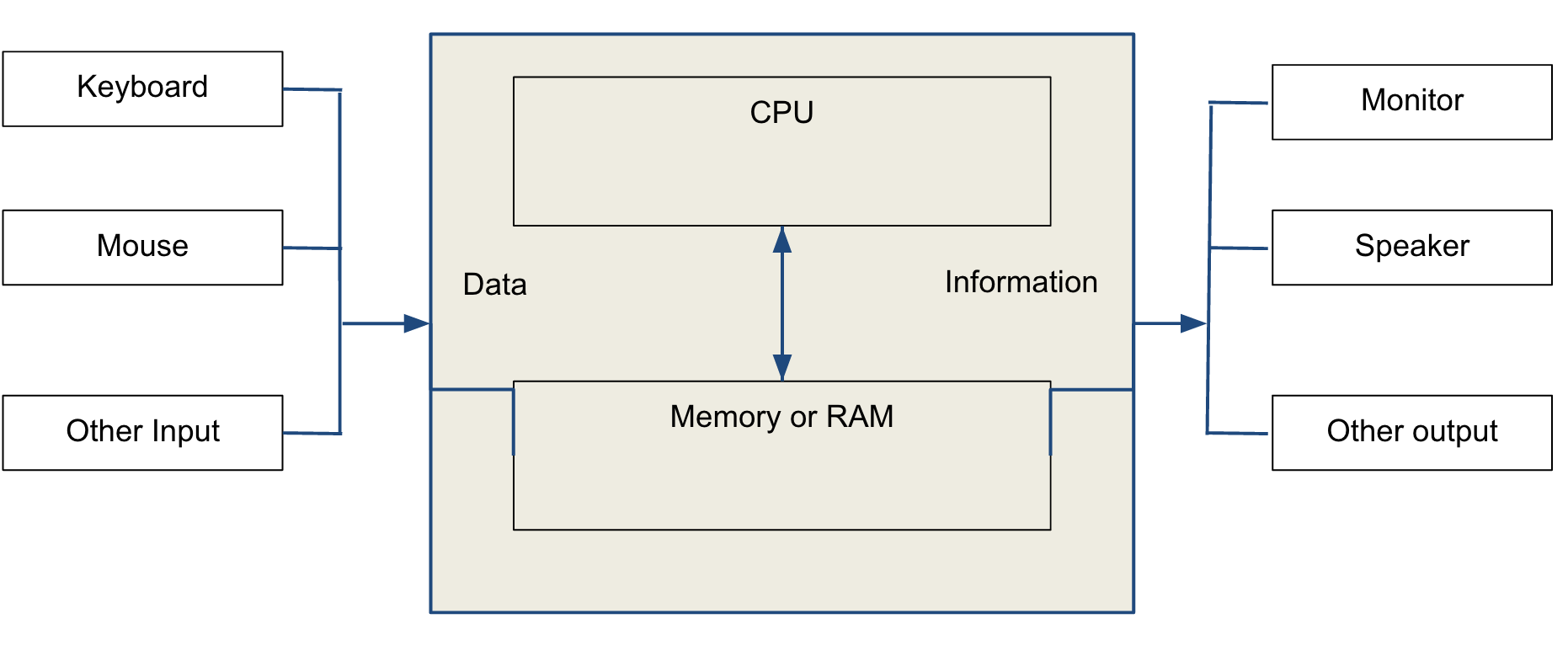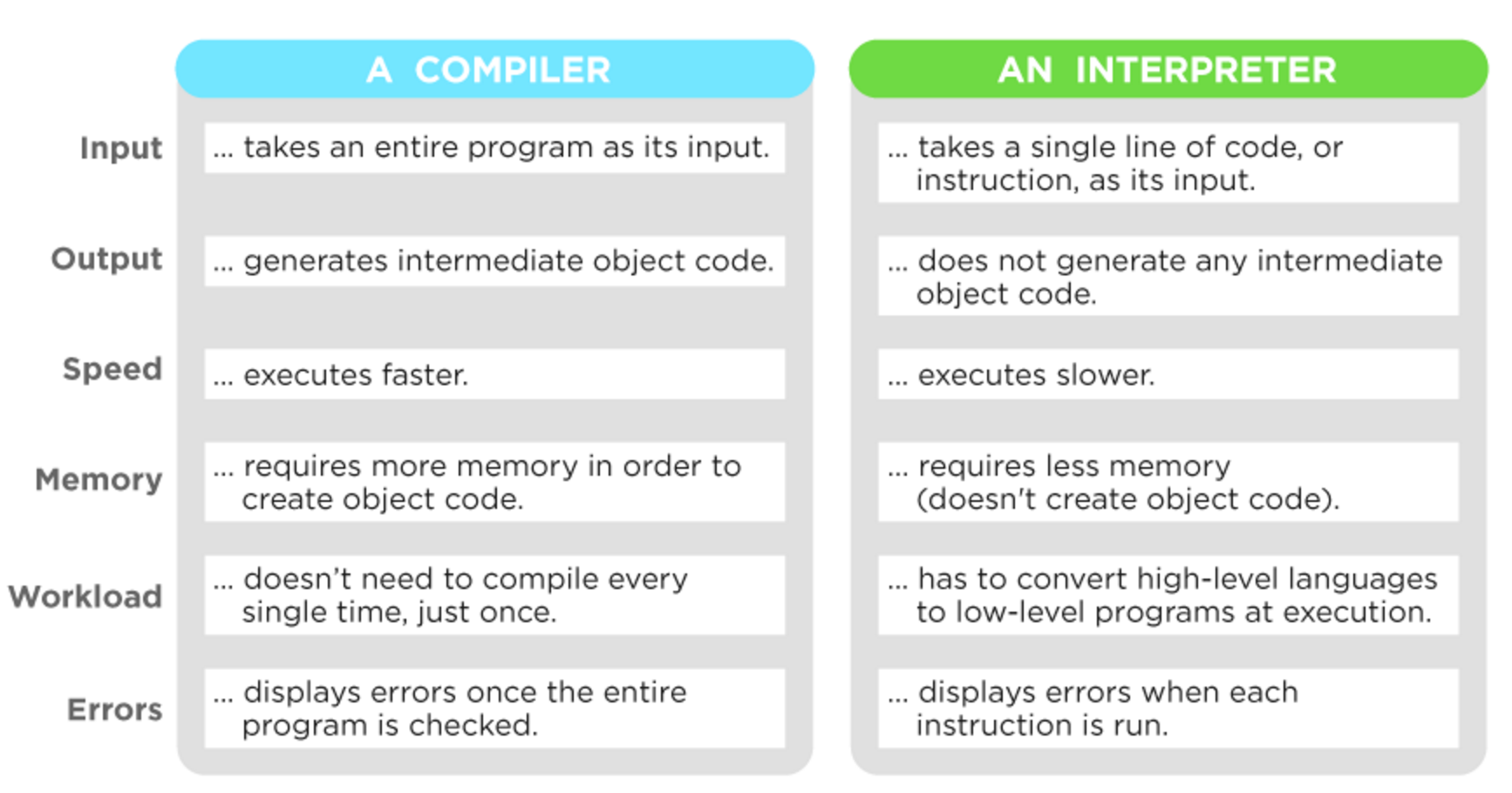Matthieu Choplin
matthieu.choplin@city.ac.uk
http://moodle.city.ac.uk/
Python's popularity
Python has been amongst the top 10 programming languages for more than a decade according to the Tiobe index

Who uses Python?

Before going more into details... What is a computer? (1/2)
An electronic device that is receiving data input, storing (in RAM) and processing (in the CPU) them and producing information in output.
What is a computer? (2/2)

Comparison of interpreted vs compiled

Python Syntax - Statement
A statement represents an action or a sequence of actions. It does something.
To display the greeting "Welcome to Python", we use the print statement:
print("Welcome to Python")Python Syntax - Expression
It represents something, like a number or a string. Expressions are nothing but values, except they can have operations like addition or subtraction.
1 # is an expression
2 + 3 # is also an expression
"hello" # as well
Variable 1
It is a space created in memory (in RAM) where we can temporarily store values or data. We use the sign '=' for assigning a value to a variable.
You can think of it like a box. For example, we store the value (or expression) 1 in the box (i.e the variable) a.
Notice that we do not specify the type of the variable, python sees it automatically. This is what we call the "duck typing" or "dynamic typing"
a = 1
Variable 2
You can use the type builtin function to determine the type of a value or variable
Variable 3
a = 1The variable has a name so that we can reuse it. When we use a variable, it is for retrieving the value that it is holding.
Variables 4: dynamic typing
- Python has strong dynamic typing
- No need to declare the type of the variable
- Python recognises the type according to the value of the variable
my_variable = 100
print(type(my_variable)) # will print <class 'int'>
my_variable="100" # notice the quote for a string data type
print(type(my_variable)) # will print <class 'str'>
Variables 5: case sensitive
- Python is case sensitive
My_variable = 100
print(id(my_variable))
Traceback (most recent call last):
File "<stdin>", line 1, in <module>
NameError: name 'my_variable' is not defined
Python Syntax - Indentation
The indentation is the increase or decrease of space between the left margin and the first character of the line.
The code need to be properly indented, else python will raise an error.
For example, what is wrong here?
Python Syntax - Comments
If you want to comment a line, you can use the # (pound sign) that you place before the commented line
You can also comment multiple lines using ''' (triple quote) before and after the commented paragraph
Example
Experimenting with the python shell in the IDE
You can do simple arithmetic operations
x = 1 # Assign 1 to variable x
radius = 1.0 # Assign 1.0 to variable radius
# Assign the value of the expression to x
y = 5 * (3 / 2) + 3 * 2
x = y + 1 # Assign the addition of y and 1 to x
area = radius * radius * 3.14159 # Compute area
Exercise 1: run the code as a python script
After having experimented in the python shell (or python interpreter):
- Take the previous script and put it in a NEW python file.
- Run the script
Exercise 2:
Add a python file to the project
- Download the python file with this link (right click and save as)
- Run the script in Pycharm
- Change the value of the variable to create your email at city (with the extension @city.ac.uk)
- Can you explain what is the operator "+" for a string?
The different type of errors (1/3)
Syntax ErrorFor example, when we forget a quote to close a string
print("Welcome to Python)The different type of errors (2/3)
Runtime ErrorFor example a division by zero (which is impossible)
print(1/0)The different type of errors (3/3)
Logic errorWhen a program is not doing what we want it to do.
For instance, a wrong formulae for converting pound in kg
pounds = float(input("Enter weight in pound: "))
# convert pound in kilogramme
kilograms = pounds / 0.454It should be:
pounds = float(input("Enter weight in pound: "))
# convert pound in kilogramme
kilograms = pounds * 0.454Exercise 3:
Write a program that converts pounds into euros.
- The values can be hard coded for now (it means that the program will not be dynamic)
- Use comments
- Use variables
- Use print
The input function
myName = input()The input() function waits for the user to type some text on the keyboard and press ENTER.
Exercise 4:
- Write a program that ask the user what amount is to be converted in euros, convert it and display the result.
- Hint: we are going to need the function input and the function float
Some simple Data Types in Python
- Numeric: int, float
- String: str
Introspection
Built in functions that enables to introspect your code
- help()
- dir()
Exercise 5
Make a word that a user input in UPPER CASE, i.e. all the letters of the word should be in capital
- Use the input function.
- Put the word in a variable.
- Use a built in function (the help function) to find the method for that.
- Use print
